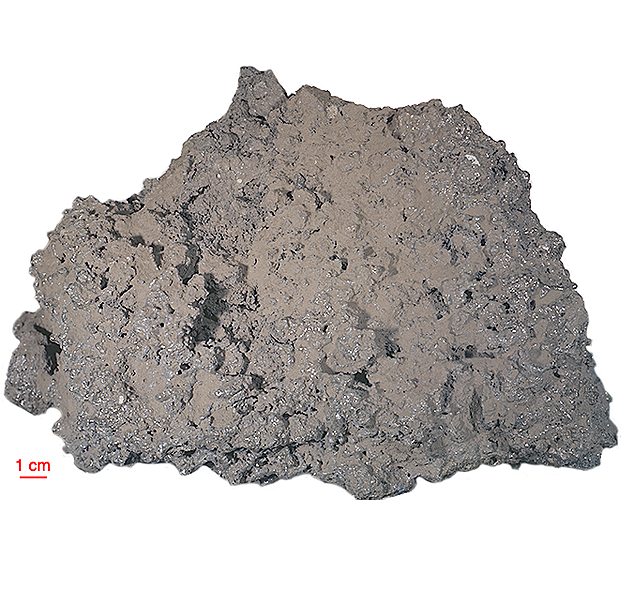
Fact sheet
15015 is a large glass covered breccia with a rind of glass on all sides. It is a shock melted soil breccia with low percentage of agglutinate and a high percentage of glass fragments including plastic forms, twisted and ropy forms, spheres and broken fragments. Glass compositions are of a wide range and include green volcanic glass typical of the Apollo 15 site. About 60% of 15015 is fine-grained dark matrix and includes an abundance of glass fragments. Lithic fragments of mare basalt, KREEP basalt, feldspathic basalt and granulite are reported.
The sample weighed 4770 grams before analysis. A fragment of KREEP basalt has been dated at 3.7±0.1 billion years (Ar/Ar).
Further details of this and other Apollo samples are here: http://curator.jsc.nasa.gov/lunar/
The Apollo 15 landing site was in the Apennine Highlands, and close to Hadley Rille — a long, narrow winding valley. Approximately 76 kg of lunar material, including soil, rock, core-tube and deep-core samples, were returned to Earth.
This mission was the first flight of the Lunar Roving Vehicle which allowed the astronauts to venture further from the Lunar Module than in previous missions. During three periods of extravehicular activity, or EVA, on July 31st, and August 1st and 2nd, Scott and Irwin completed a record 18 hours, 37 minutes of exploration, travelling 17.5 miles, in the first car that humans had ever driven on the Moon.
Apollo 15 was launched on 26 July 1971.






